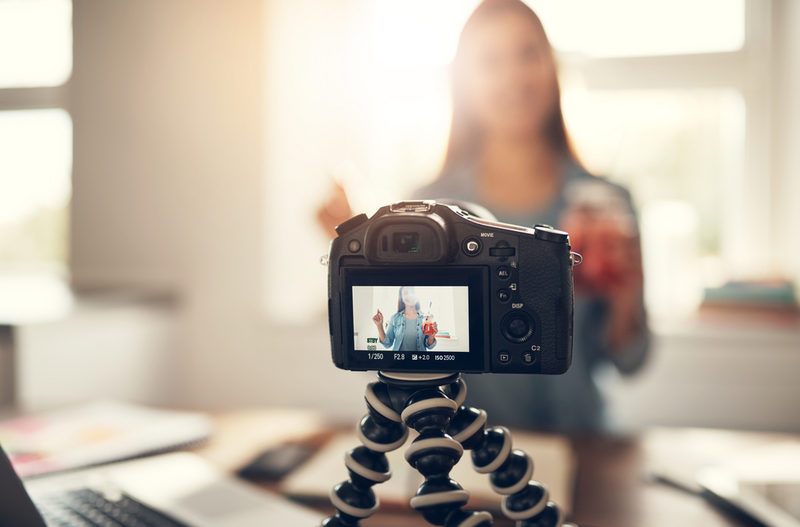ATD Blog
Check Yourself: Videotaping Will Improve Your Performance
Tue May 28 2019

As trainers, speakers, and teachers, we help others professionally develop. I would guess most of us also like to develop our own skills. Many resources are available for those in the professional development business, but there is one method that is underused: videotaping ourselves in action.
I teach my public speaking students that watching a video of yourself giving a speech is the best learning tool. Yet, in the 10-plus years that I have been teaching, speaking, and facilitating workshops, I have not practiced what I preach.
Recently, a friend of mine videotaped a workshop I gave at a professional organization meeting. Upon watching the video, I wished I had done so sooner and more often! Although I have received written evaluations about my presentation, nothing shed light on how and where I could have improved as watching myself.
Training and speaking are performance-based activities. Others in performance-based careers know the value of watching themselves in action; athletes, actors, and musicians often do so as part of their training. So why is this practice not a common part of our professional development as trainers and facilitators?
Here are a few important things I learned about myself from watching myself.
Nonverbal Communication
Did you know that nonverbal signals—posture, gestures, tone, volume, rate, inflection, facial expressions, and so forth—can communicate more of the message than words? It’s hard to hide your emotions and the truth because your nonverbal signals will give them away. If you are not being authentic, accurate, or confident, or you don’t fully believe the information you are presenting, it will be obvious to the audience no matter how you try to hide it.
My unconscious nonverbal habits were revealed when I watched video of myself. When I was trying to be funny but wasn’t confident in my comedy skills, I tended to lower my voice and mumble. When I asked groups to share after a discussion activity, everyone just quietly stared at me—but I had a head tilt, facial expression, and vocal inflection that showed my fear and lack of confidence.
I also noticed I tended to speak in a more monotone voice when going over theory-based information; it looked like I thought it was boring and wanted to get to the good stuff. (Think Ben Stein in Ferris Bueller’s Day Off! Well, maybe not quite that bad.)
The video was an eye-opener. I realized that not only anxiety, but other thoughts and emotions, really came across in my nonverbal expressions.
Effectiveness of Exercises and Activities
When you’re in the middle of debriefing and discussing the exercises and activities from a training experience, it’s hard to grasp and remember everything participants said and learned. Watching the video really helped with this.
For instance, after the discussion of one group activity, I realized most of the participants were not understanding all I hoped they would. Fortunately, I could pause the video to take careful note of their comments and thoughts. This was helpful in learning what I needed to add or clarify to improve the activity for next time.
Learning Outcomes
When you create a training presentation or workshop, you base your design on what you think people need to know and understand. You design how each unit flows into and complements other modules as well as what you think will best support learners’ needs, goals, and knowledge level. You choose activities, exercises, and discussion prompts that will help integrate information and accomplish specific learning outcomes.
Because that doesn’t always work as well as you plan, you can learn valuable information during the end-of-session takeaways. But there’s nothing like watching a video to know whether you were or weren’t successful at meeting all of your learning goals and home in on exactly where you need to improve.
When was the last time you videotaped yourself giving a presentation or facilitating a training?
